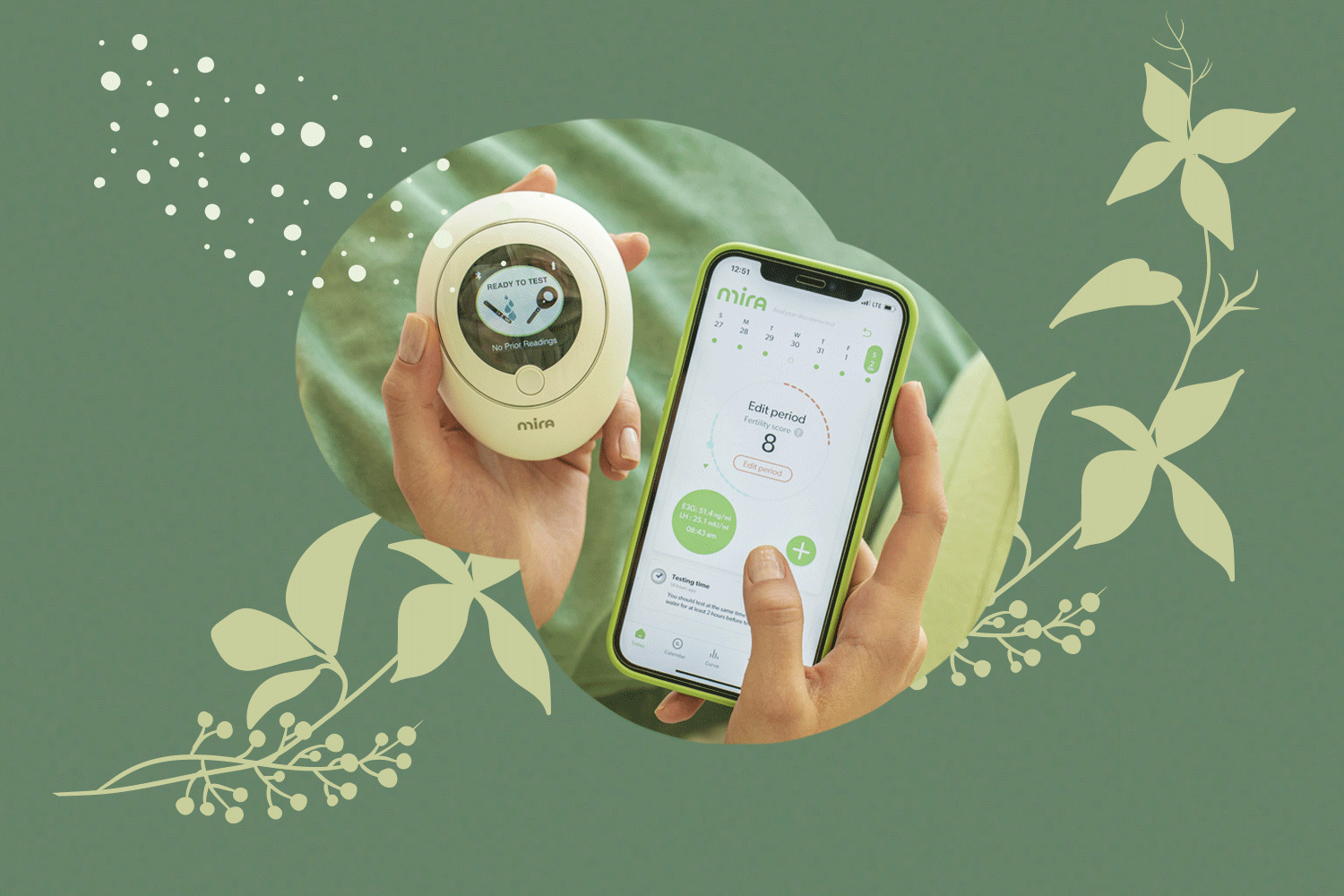When Are You Least Likely to Get Pregnant?
Achieving your fertility goals is often about more than just TTC, and fully understanding your least likely time to get pregnant can help you make informed decisions about intimacy and help you safely learn the nuances of your cycle.

In this post we will talk about when a woman is least fertile and when the least likely time to get pregnant is.
Is there a time when you’re least likely to get pregnant?
The time when you’re least likely to get pregnant, or when a woman is less fertile, is during menstruation or your period. In order to get pregnant an egg must be released (ovulation) and then fertilized by a sperm. If this doesn’t take place, the egg begins to disintegrate and the uterus sheds the lining it built up to help the fertilized egg implant and your cycle begins. Your period marks the first day of your cycle and you have a very low level of fertility during this time (though it is still possible to get pregnant on your period).
How to determine when you’re least fertile
To determine fertility, or the times of the month when you are most and least likely to get pregnant, a woman must be able to detect the beginning and end of her fertile window. Even though you are not equally likely to conceive on every day of your fertile window, your chance of conception is still high.
Track your period
The most basic method is to make note of your menstrual cycle for several cycles on a calendar and then use a generic formula to determine the start and end of your fertile window. While using this standard calculation can certainly give you a starting point, differences in cycle length and ovulation can make it an unreliable method for determining when you are least fertile. Studies have found that even women with the regular menstrual cycle length can have differences in the date of ovulation and that ovulation can occur during a large range of days.
Track your ovulation
Tracking your ovulation isn’t the same thing as tracking your period. Your period is the bleeding that occurs 12-16 days after ovulation if you don’t get pregnant. Tracking your ovulation can help you know when you are most fertile since ovulation is the most fertile period of your cycle.
Track your hormones
Regardless of when you ovulate, your sex hormones follow a predicatble path before ovulation. The three to five days leading up to ovulation will see a rise in estrogen and luteinizing hormone (LH) surges 24 to 36 hours before ovulation. The changes in these two hormones result in ovulation and tracking them is one of the most accurate ways to predict ovulation. By measuring both LH and estrogen you gain a detailed overview of your entire cycle, including when you are least likely to get pregnant.
Hormone testing and tracking is one of the most scientifically trusted ways to detect a fertile window and a hormone tracking device like the Mira Fertility Tracker can help you get a complete, personalized fertility picture with your unique patterns. Testing your levels of estrogen and LH with Mira’s digital fertility analyzer can help you predict your full fertile window, not just the date of ovulation.
To know exactly what’s happening with your body, Mira measures the numeric levels of fertility hormones with a urine test, just like bringing a lab test to your home. Mira tracks your fertility hormones continuously, and the Mira App gives you personalized fertility insights based on your unique hormone data.
About your fertile window
Even though your most fertile period only lasts 24 to 36 hours during each menstrual cycle, your fertile window can be much longer. This window refers to the days leading up to ovulation as well as the day after ovulation. Your eggs only live up to 24 hours after they are released from the ovary before they begin to degrade but sperm can live much longer. Sperm can live up to five days in a woman’s cervical mucus which is why your fertile window includes the days leading up to ovulation as well as ovulation itself.
The four to five days leading up to ovulation, as well as the 24 hours after it, are when fertilization can take place if the sperm meets the egg. The day before ovulation and the day of ovulation are peak fertility days.
Additional precautions
Birth control
Typically, your hormones rise and fall throughout your cycle, but hormonal birth control prevents these surges in natural hormones and your progesterone and estrogen levels stay more consistent throughout your cycle. Hormonal birth control blocks the signal for the ovary to release an egg, thickening the cervical mucus so sperm cannot reach the egg (if ovulation occurs), and thinning the uterine lining so implantation cannot take place. It can come in several forms and generally works by releasing synthetic hormones into your body to trick your brain into thinking you have already ovulated.
Timed intercourse
Timed intercourse is usually used as a natural and low intervention method for many couples trying to conceive and is also valuable when it comes to avoiding pregnancy. In a nutshell, it is the practice of monitoring your body to properly time and engage in sexual intercourse with the best chance of achieving your goals.

If your goal is to become pregnant then you would time intercourse based on your fertile window. However, you can use this information to time intercourse during the least fertile period in your cycle.
Fertility Awareness Method
Fertility Awareness Methods (FAMs) involve learning your cycle and your body’s signs of fertility. Through detailed tracking, the goal is to get to know your body’s signs and symptoms to predict when you are most or least fertile.
FAMs require consistent and diligent tracking and are most successful when you also avoid intercourse during your most fertile period. It’s important to note that although FAMs don’t offer protection against STIs and work better for some women than for others.
Mira’s Editorial Process
All content produced by Mira meets stringent editorial standards, ensuring excellence and accuracy in language and medical precision. Every piece undergoes thorough fact-checking and review by qualified professionals. Check out our full editorial process to learn more.










